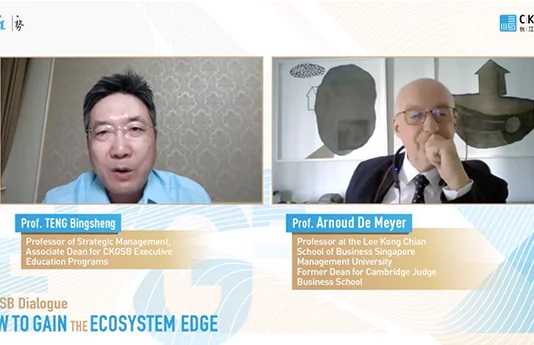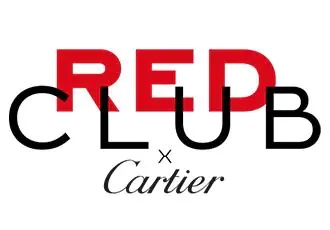Why the annual performance review is finally getting the pink slip.
Employees who suffer through them know it. Managers who dread giving them know it. Even many consultants and business school professors (who seldom meet an analytical exercise they didn’t like) have expressed serious doubts about the value of annual employee assessment. Yet for over half a century, they have remained a constant feature of corporate life.
Until now. Over the past few years, a number of major companies, including Microsoft and Adobe, have dropped their annual employee rating systems. This year, two influential global consultancies, Accenture and Deloitte, added their names to the list, citing high costs and minimal results. Now, momentum seems to be building: even General Electric, the blue chip most closely associated with ruthless annual assessments, has announced plans to phase out the annual review.
“Companies have just figured out that it’s not working. They’re not finding it to be effective,” explains Cliff Stevenson, Senior Human Capital Researcher at the Institute for Corporate Productivity (i4cp), a human resources research firm headquartered in Seattle.
The Review, Reviewed
The performance review grew out of US military practices and spread to the private sector in the 1950s, according to several management histories. Initially, the review focused on personal qualities that helped employees fit into the organization at a social level, but by the late 1950s the emphasis turned toward ratings based on meeting clear business objectives.
At its most extreme, the idea morphed into a system General Electric adopted in the 1980s that critics refer to as “rank and yank”: rate everyone’s performance, reward high scorers, cull the bottom 10%. CEO Jack Welch defended the practice in his 2001 memoir, Jack: Straight from the Gut: “Some think it’s cruel or brutal to remove the bottom 10 percent of our people,” he wrote. “It isn’t. It’s just the opposite. What I think is brutal and ‘false kindness’ is keeping people around who aren’t going to grow and prosper.”
But all the way along, some have questioned whether performance reviews really can separate the wheat from the chaff. As far back as 1969, W. Edwards Deming, the father of Total Quality Management, argued that 94% of variation in performance in any process had to do with the structure of the job rather than the capacity of the individual.
“It sounds great. Can’t be done. Unfortunately, it cannot be done—on short range. After 10 years, perhaps,” he grumbled in a 1984 video interview. “After 20 years, yes.”
If Deming hated the theory behind the annual assessment, he had even harsher words for the practice, which he ranked as the third most deadly disease facing business. Worse than useless, assessments were counterproductive. “It annihilates long-term planning, it annihilates teamwork,” Deming said. “…People live in fear.”
Microsoft’s experience seems to have confirmed Deming’s intuition. A 2012 Vanity Fair article found that “stack ranking” had effectively crippled the company’s ability to innovate. One engineer was quoted as saying, “People responsible for features will openly sabotage other people’s efforts. One of the most valuable things I learned was to give the appearance of being courteous while withholding just enough information from colleagues to ensure they didn’t get ahead of me on the rankings.”
Beyond sharper elbows, bad reviews may have other unintended consequences. One recent study by scholars at the Rotterdam School of Management found that German police officers who felt they had been treated disrespectfully during a performance review were much more likely to behave unethically afterwards.
Employees have often felt bitter about their reviews. Even the world’s first performance reviews, in imperial China in the third century AD, were criticized for favoritism: “The Imperial Rater seldom rates men according to their merits, but always according to his likes and dislikes,” complained Chinese philosopher Sin Yu.
Sin may have been on to something: academics have tallied as many as 12 different kinds of bias that can infect reviews. One study published in 2000 estimated that 62% of the variance in a grade has to do with the vagaries of individual perception.
Criticism Grows
Yet despite nearly two millennia of criticism, the annual performance review has proven difficult to abolish. “It’s the structure,” argues Evan Rosen, author of The Culture of Collaboration and The Bounty Effect: 7 Steps to The Culture of Collaboration. “The structure of many organizations has barely changed since the Industrial Age. Companies still use annual performance reviews for the same reason they still use the traditional organization chart: they’re both remnants of command-and-control organizational structures.”
Only over the past decade has a consensus begun to grow against the practice. In 2006, ic4p reported that 71% of executives surveyed said employees found their performance management process fair. By 2010, that had slid to 38%; and by 2013, to 29%.
Other studies have been even more damning. In one 2014 study, Deloitte found that only 8% of executives polled said that performance management drives significant value, while 58% considered it a waste of time for all concerned.
One reason the outcry has grown may be that management has less time to do the job well anymore. “Today, managers have multiple roles, are increasingly working longer hours, and have more direct reports,” says Sir Cary Cooper, a professor of organizational psychology and health at the Manchester Business School. “Keeping in touch with an individual is more difficult, particularly if you do the performance appraisal once a year and can’t remember specific behaviors to feedback to the individual employee to help him/her understand the behavior you would like changed.”
In addition to their general busy-ness, managers are also not finding these reviews all that useful. Peter Cappelli, a professor of management at the Wharton School of the University of Pennsylvania, says that one reason performance reviews are becoming less popular is that most companies don’t take them seriously except as a way to differentiate pay, and as a result the process is being squeezed out by more pressing concerns.
The millennials now entering the workforce, the 20 to 30-something generation that has grown up in a world of constant feedback, may be having an impact as well. GE’s Senior Vice President for Human Resources, Susan P. Peters, recently told Quartz, an online publication, that millennials had helped drive GE’s reconsideration of its Welch-era ranking system. “I think some of it, to be really honest, is millennial-based. It’s the way millennials are used to working and getting feedback, which is more frequent, faster, mobile-enabled, so there were multiple drivers that said it’s time to make this big change.
A New Old Review?
The new assessment systems that companies are now experimenting with rely on more frequent, forward-looking updates. This makes sense, says Manchester’s Cooper. “If you’re trying to give people feedback, you don’t do it once a year,” he says. “My own view is that an effective, good manager should do it in real time all the time. You don’t need a performance appraisal.”
The new kinds of review systems are mostly either subjective or data-driven, according to Rosen, who sees a similar flaw in both approaches.
“The subjective variety includes crowdsourced evaluations which may appear collaborative, because they involve input from many team members,” Rosen says. In reality, however, he says, crowdsourced feedback often compromises collaboration, in part by “encouraging a piling-on mentality,” by encouraging the group to become overly focused on a single shortcoming.
Data-driven systems are also easy to misuse. “Measurement mania has infected organizations and has compromised long-term value, encouraged people to cut corners and reinforced command-and-control,” Rosen adds.
In the end, what needs to change is not just how the review is conducted, but also its aim. “Most of the replacement systems for annual performance reviews have done little or nothing to overcome the biggest challenge for most businesses, which is to replace command-and-control organizational structures with collaborative structures,” Rosen says.




















